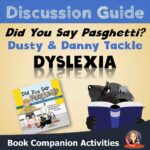Take Your Read Aloud Time to the Next Level with These Ultimate Tips
Do you struggle to fit read-aloud time into your day? School days can be packed with demanding expectations from the curriculum, pacing guides, standards to teach, and assessments. Often, there is no time left to read aloud to the students. The experience of read-aloud is still essential for all ages. Finding creative ways to fit it into your schedule will allow you to provide this excellent opportunity for your students. According to Scholastic.com, more than 80% of kids and parents across all income levels and ages love or like read-aloud time. We owe it to our kids!
In this blog, I will share why providing read-aloud time for your child/student is SO crucial to their development. I will also share some trending tips and examples for various ages. World Read Aloud Day on February 2 is a great time to explore more resources and information. (This post contains affiliate links.)

Benefits of Read Aloud Time in the Classroom
- This experience boosts verbal memory.
- Reading aloud to children helps their brains grow and prepares them for listening, talking, reading, and learning.
- It also develops their thinking skills, understanding, curiosity, creativity, and more.
- When students hear the text being read aloud, they receive the support they need for challenging vocabulary.
Engaging Read Aloud Books for Younger Elementary
Recent studies show heightened interest in using informational text with young children. While utilizing the recommended 10- 20-minute read-aloud sessions, studies have shown that reading these texts supports difficult content. This particular study allowed first graders to have a more robust understanding of scientific ideas. Another study found that second and third graders engaged in a combined literacy/science approach outperformed those students involved in a science or literacy-only context on a posttest. The engaging read-aloud recommended were:
- Snowflake Bentley by Briggs Martin)
- Rare Treasure: Mary Anning and Her Remarkable Discoveries by Don Brown
- The Boy Who Drew Birds: A Story of John James Audubon by Jacqueline Davies
Engaging Read Aloud Books for Upper Elementary
Some upper elementary-aged students will tell you they don’t like to read. Even that child who refuses to say he wants to read will usually find joy in hearing a read aloud. At this age, this experience boosts vocabulary and increases fluency. These examples will initiate class discussions, encourage predictions, and demonstrate how to “think aloud” while working through the story. Here are some examples of highly voted titles:
- Harry Potter and the Sorcerer’s Stone by J.K. Rowling
- Frindle by Andrew Clements
- Thank You, Mr. Falker, by Patricia Polacco
Read Aloud for Social-Emotional Learning
 Using well-written, age-appropriate children’s literature can provide teachable moments that children can use to explore feelings and actions that they may not be able to address in real life. Check out this post on adding social-emotional books to your read-aloud list.
Using well-written, age-appropriate children’s literature can provide teachable moments that children can use to explore feelings and actions that they may not be able to address in real life. Check out this post on adding social-emotional books to your read-aloud list.
Tips for Teaching Social-Emotional Learning
→ Check out these books with discussion guides and activities.
Alpacas Don’t Get Angry by Tammy Fortune

Free Activities and Journal Pages
Did You Say Pasghetti? Dusty and Danny Tackle Dyslexia by Tammy Fortune
Free Discussion Guide and Activities

Read Aloud Activities
- Alphaboxes allow students to interact with the text by using the 26 letters of the alphabet to record essential concepts about a specific topic or theme. This is typically used in the lower grades but could easily be adjusted for the upper grades. They utilize different parts of the brain (what they know about the topic, new information, share with others and add additional information) while using different colors to write in.
- Model making connections to the text across all grade levels. It needs to include modeling text-to-self connections, modeling text-to-text connections, modeling text-to-world connections.
- A discussion web is a great activity to support students’ engagement with text because it allows for various points of view within a structured activity. Students work collaboratively in small groups and have the opportunity for all voices to be heard. Sometimes a simple prompt of “I agree because..” or “I disagree because..” will start this web with pairs then back to the large group.
- Incorporating art and writing journals is also great to help reach all learners.
Where to Get Great Read-Aloud Book Lists
Follow these tips and start seeing better results from your read-aloud time.
Maybe you have a tip that I didn’t include? I’m always interested in hearing your thoughts, so don’t be shy, leave a comment, and let me know what you think.
Happy Read Aloud



